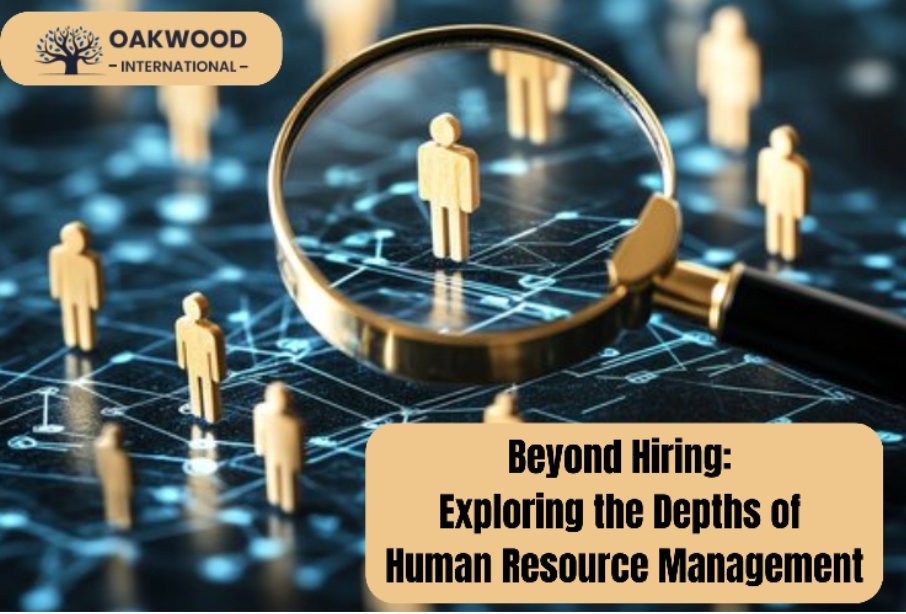
What comes to mind when you hear “human resource management”? For many, it is just hiring, interviews, and paperwork. But those studying for the CIPD Level 5 Associate Diploma in People Management know better. HRM goes far beyond recruitment. Understanding What is Human Resource Management today means exploring how HR shapes culture, supports leadership, and drives real change.
This blog dives into those overlooked areas and reveals how HR plays a powerful role in every part of a business, far beyond job offers and contracts.
Table of Contents
- More Than Hiring: What HRM Does Behind the Scenes
- Conclusion
More Than Hiring: What HRM Does Behind the Scenes
Human Resource Management goes far beyond filling vacancies; it shapes people’s growth, collaboration, and success at work. Below are the key ways HRM supports businesses beyond the hiring process:
Creating a Strong Workplace Culture
Employee satisfaction at work influences everything from loyalty to productivity. HR is essential to creating that environment. Relationships and respect are just as important as following the rules. HR sets the tone through daily contacts and clear policies. They plan team-building exercises and promote candid dialogue.
These initiatives foster an environment where people can voice concerns and freely exchange views. A positive workplace culture also enhances employee retention. When people feel appreciated and a part of something worthwhile, they are more inclined to stick with their jobs. HR fuels this type of welcoming, upbeat atmosphere.
Developing People Through Training
One of human resources’ most effective roles is supporting people’s growth. Checking boxes for yearly training is not enough. HR considers growth from a long-term perspective. They evaluate abilities, spot deficiencies, and offer individualised learning programmes for every position. This could involve cross-departmental projects, online courses, workshops, or mentoring.
Businesses that prioritise training create better teams and develop future leaders inside. Team members who feel supported in their professional choices participate more actively. Learning investments also show team members that the business is dedicated to their success, which improves performance and increases job happiness.
Handling Conflict and Boosting Morale
There are many diverse personalities and viewpoints in the workplace. Therefore, Conflict is inevitable, but it should never be disregarded. When conflicts emerge, HR steps in as a mediator. They pay close attention to each side’s words, provide reasonable answers, and ensure the procedure is private and courteous.
They are there to restore peace, not to place blame. HR is proactive in boosting morale and resolving conflicts. Through surveys and one-on-one conversations, they get input from team members, address issues, and recognise minor accomplishments. These acts raise Employee trust, demonstrating that the company genuinely cares and listens.
Supporting Leadership and Strategy
HR exists for more than just helping people. It is also a strategic partner. HR specialists provide insights throughout the transition, assist with succession planning and design team structures. They collaborate closely with leadership teams to comprehend objectives and match people-related initiatives with broader corporate strategy.
For example, HR prepares for the recruits, skills, and training required if the business wants to grow. HR facilitates communication and reorganisation when cost reductions are required. HR ensures that the right people are in the right roles at the right time by assisting leaders with their planning, which facilitates growth.
Promoting Fairness and Inclusion
An equitable workplace is also productive. HR drives initiatives towards equity in all phases of team development. These include creating inclusive job descriptions, teaching managers about unconscious prejudice, and guaranteeing equal compensation for equal effort. HR also guarantees that workplace adaptations, whether physical or emotional, are in place for people who require them.
People who feel liked and understood participate more naturally and work better with others. A diverse and inclusive culture is moral and has commercial advantages, including improved decision-making, innovation, and a greater brand reputation.
Using Data to Make People’s Decisions
In the past, HR choices were based on intuition and experience. Data is more important now. Contemporary HR departments use software to monitor important metrics like engagement levels, training completion, and absenteeism. Trends found in this data aid in the early detection of problems.
HR can search and leave interviews and comments for a team with significant turnover to learn why. Data-driven insights help HR make wise decisions and support them with facts. This increases trustworthiness and improves decision-making quality. Data transforms HR from a support function into a central component of corporate success.
Conclusion
Role-filling is no longer the only aspect of human resource management. It all comes down to establishing an environment where employees feel encouraged, appreciated, and free to develop. HRM affects every aspect of the company, from directing strategy to forming culture. One must complete the CIPD Level 5 Associate Diploma in People Management to comprehend these more complex duties.
Learning with Oakwood International could be game-changing if you want to investigate HRM genuinely and hands-only.